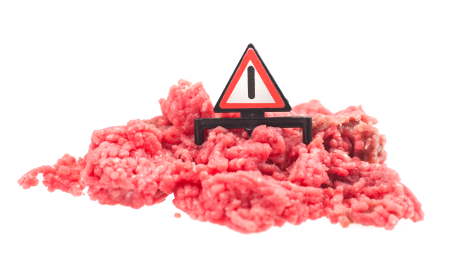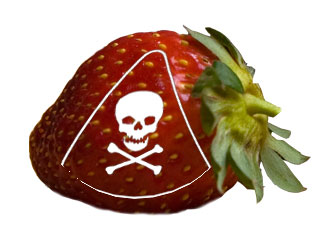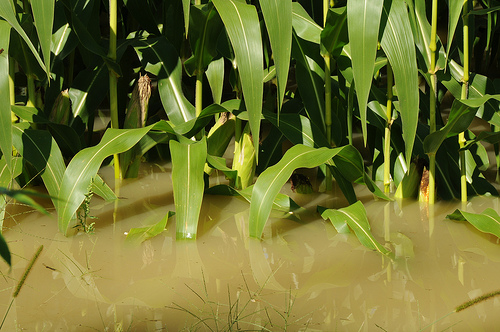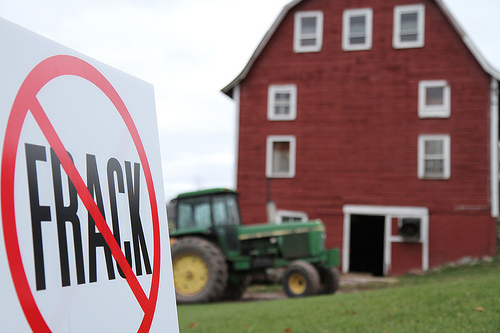We continue digesting this year’s food politics coverage below — only this time we take account of the things that didn’t go so well. (Tired of bad news? See the year’s good food news instead.)
1. Food prices have gone up, and more people need help feeding their families
 The fact that 46 million people — about a seventh of the U.S. population — now receive food stamps (i.e. help from the Supplemental Nutrition Assistance Program (SNAP)) should be enough to tell us that something is wrong with America’s food system. But thanks to the way public food assistance is now set up, the problem is all but invisible to the rest of us.
The fact that 46 million people — about a seventh of the U.S. population — now receive food stamps (i.e. help from the Supplemental Nutrition Assistance Program (SNAP)) should be enough to tell us that something is wrong with America’s food system. But thanks to the way public food assistance is now set up, the problem is all but invisible to the rest of us.
Why are so many Americans using food stamps? Beyond our collective economic woes, a large part of the problem lies in the cost of food itself, which rose considerably in the last few years. Then there’s the speculation market, which drives up the cost of commodity crops. Ethanol doesn’t help, either.
2. The food we can afford could make us sick (or even kill us)
 2011 saw the largest Class 1 (i.e. potentially lethal) meat recall in history, involving 36 million pounds of Cargill turkey tainted with multi-drug resistant Salmonella.
2011 saw the largest Class 1 (i.e. potentially lethal) meat recall in history, involving 36 million pounds of Cargill turkey tainted with multi-drug resistant Salmonella.
The listeria outbreak in cantaloupes was also the deadliest U.S. foodborne illness outbreak in 100 years.
Germany’s E. coli outbreak over the summer was also the deadliest on record — anywhere.
What happened to last winter’s Food Safety Modernization Act — the much-debated legislation that might have updated the regulations that would stop outbreaks like these? Well, to make a long story short, it was never funded. Who’s hungry now?
3. GMOs aren’t going anywhere
 “Superweeds,” resistant to Monsanto’s Roundup herbicide, raise red flags.Photo: Lost in FogTake a deep breath: 2011 began with the approval of GMO alfalfa (which could permanently change the organic milk industry for the worse). Less than two weeks later, the United States Department of Agriculture (USDA) defied a court order and partially deregulated GMO sugar beets without completing an environmental impact assessment.
“Superweeds,” resistant to Monsanto’s Roundup herbicide, raise red flags.Photo: Lost in FogTake a deep breath: 2011 began with the approval of GMO alfalfa (which could permanently change the organic milk industry for the worse). Less than two weeks later, the United States Department of Agriculture (USDA) defied a court order and partially deregulated GMO sugar beets without completing an environmental impact assessment.
Meanwhile, concern about “superweeds,” which are resistant to Monsanto’s Roundup herbicide, raised red flags beyond the foodie and environmentalist communities; now big business is also worried. And our six-legged friends have outsmarted Monsanto too; an insect called the corn rootworm has become resistant to the company’s Bt corn (which is supposed to be engineered to produce its own pesticides).
GMO business got especially fishy this year, as well: GMO salmon may also be inching toward commercial approval. The “frankenfish” appeared to be fast-tracked for Food and Drug Administration (FDA) approval during the first half of 2010, which would have made it the first genetically engineered animal food on the market. But in June, the House of Representatives blocked the FDA from spending money to approve the salmon. This seemed like a good sign, but in October, the USDA gave Aquabounty, the company looking to produce the salmon, a research grant — meaning this fish is far from out of the picture.
4. Pesticides: Also here to stay for now
 Methyl iodide, a known carcinogen, has been approved for use in California strawberry fields.Eaters may have plenty of evidence to suggest that agriculture should involve fewer pesticides (example: this recent piece about the weed killer atrazine in the rural water supply), but big agribusiness vehemently disagrees.
Methyl iodide, a known carcinogen, has been approved for use in California strawberry fields.Eaters may have plenty of evidence to suggest that agriculture should involve fewer pesticides (example: this recent piece about the weed killer atrazine in the rural water supply), but big agribusiness vehemently disagrees.
Last December’s approval of methyl iodide (a known carcinogen) for use in strawberry fields in California has many advocates concerned about farmworkers, nearby communities, and water tables. Small bright spot: It has yet to be adopted widely, so many in the state are still working to make the short- and long-term consequences known. Some advocates are even calling for an end to all fumigants.
In May, we covered the fight in Congress to restrict the EPA’s ability to regulate pesticides — specifically when it comes to spraying near streams and waterways — and the issue has yet to be put to sleep.
Meanwhile, there is now clear evidence linking a class of pesticides called neonicotinoids to recent honeybee die-offs, but top USDA scientists still refuse to recommend a ban. To make matters worse, honeybees aren’t the only type of bee that’s disappearing: Bumblebees are going missing, too.
5. Extreme weather is messing with our food
 A Vermont corn field, flooded after Hurricane Irene.Photo: putneypicsBetween the drought in the Southwest, which wreaked havoc on farms and ranches in both the U.S. and Mexico, and Hurricane Irene, which hit the East Coast at the worst possible moment (peak harvest for farmers in New York state and elsewhere), 2011 was a terrible weather year. The result? Fewer pumpkins for Halloween, and a costlier Thanksgiving, to start with. But this year was also a reminder of the ways a shifting climate could make food production especially unpredictable in the future.
A Vermont corn field, flooded after Hurricane Irene.Photo: putneypicsBetween the drought in the Southwest, which wreaked havoc on farms and ranches in both the U.S. and Mexico, and Hurricane Irene, which hit the East Coast at the worst possible moment (peak harvest for farmers in New York state and elsewhere), 2011 was a terrible weather year. The result? Fewer pumpkins for Halloween, and a costlier Thanksgiving, to start with. But this year was also a reminder of the ways a shifting climate could make food production especially unpredictable in the future.
6. The American meat industry is still run by a small handful of huge companies
An aerial view of a CAFO.Photo: Kestrel AerialFor a while it seemed that one of the more positive food policy developments of 2011 might have come in the way of important changes to the Grain Inspection, Packers & Stockyard Administration (GIPSA) — a wonky set of rules that essentially set the terms for competition in the meat industry. Then, in November, we reported that the USDA removed all parts of the rule that would have upset the current — highly consolidated — meat industry. Whereas new rules would have truly leveled the playing field for small producers, business as usual will mean that four companies still control 90 percent of all beef processing, while an equally small handful of companies control 70 percent of all pork processing, and nearly 60 percent of poultry processing.
On a related note: Remember how California voters opted for more humane standards for egg producers a few years back? Well, this year, Idaho lawmakers have been easing their regulations to make way for what they hope will be a wave of companies moving in from California to build confined animal feeding operations (CAFOS) when the rules go into effect. Thanks a lot, Idaho.
7. Fracking is bad for farming
 Photo: Not an AlternativeOne of the most well-known results of hydraulic fracturing, the process of drilling for natural gas known as “fracking,” is the wastewater that appears as a by-product. But not everyone knows about how that wastewater affects farms. In May, we ran a story about the impact fracking has on ranching: Cows in upstate New York were getting sick and dying after coming into contact with chlorine, barium, magnesium, and other radioactive elements. But that’s not where it ends; earlier in the year, wastewater actually flooded a series of farms in Pennsylvania.
Photo: Not an AlternativeOne of the most well-known results of hydraulic fracturing, the process of drilling for natural gas known as “fracking,” is the wastewater that appears as a by-product. But not everyone knows about how that wastewater affects farms. In May, we ran a story about the impact fracking has on ranching: Cows in upstate New York were getting sick and dying after coming into contact with chlorine, barium, magnesium, and other radioactive elements. But that’s not where it ends; earlier in the year, wastewater actually flooded a series of farms in Pennsylvania.
8. BPA is lurking
 BPA was banned from use in baby bottles in California, but it still lurks in other products.On the bright side, the endocrine disruptor bisphenol-A was banned from use in baby bottles in California this fall. But national efforts to get it out of canned food (even the FDA itself detected it in can liners) haven’t happened yet.
BPA was banned from use in baby bottles in California, but it still lurks in other products.On the bright side, the endocrine disruptor bisphenol-A was banned from use in baby bottles in California this fall. But national efforts to get it out of canned food (even the FDA itself detected it in can liners) haven’t happened yet.
The FDA is dragging its feet, but the National Institutes of Health recently initiated a $30 million research program to examine the growing risks and make a final call on BPA’s safety. Then, in September, we reported on a fishy government study that purported to debunk the entire BPA threat all together. And predictably, corporations are behaving irresponsibly even when apprised of the danger. For example, in the spring, we reported that Coca-Cola shareholders voted by a 3-to-1 margin to continue using BPA in the lining of its soft-drink cans.
9. School lunch: still in bad shape
 We reported on the Republican attack on school lunch that began last summer, when the Obama administration proposed new USDA guidelines for school lunches that would have replaced French fries with healthier options like whole grains, orange and green veggies, and low-fat milk.
We reported on the Republican attack on school lunch that began last summer, when the Obama administration proposed new USDA guidelines for school lunches that would have replaced French fries with healthier options like whole grains, orange and green veggies, and low-fat milk.
Then, just last month, thanks to a concerted effort by Big Food lobbyists, Congress unveiled a final plan that rejected the proposed changes and allowed pizza to be counted as a vegetable.
Meanwhile, new facts surfaced that contradict a common assumption — namely, that including big food processing companies in the school-lunch chain is always a better deal. In fact, doing so may cost nearly as much as cooking from scratch and do much more harm to local communities.
10. The next Farm Bill probably won’t change the food system
The Farm Bill — that giant piece of legislation that gets updated every five years and impacts everything from food stamps to farm funding to crop insurance — came awfully close to getting crafted in a hurry this fall as part of the debt-slashing congressional supercommittee process. The supercommittee ultimately failed, putting an end the so-called Secret Farm Bill.
And while we can now look forward to a more traditional, transparent congressional process, it looks like the draft Farm Bill that was drawn up in November will still provide the framework for this year’s process. This is unfortunate news because the draft bill included significant cuts to conservation programs (despite a great deal of opposition) while dishing out large subsidies to industrial-sized commodity growers (just in a slightly different form). We’re still hoping for a miracle, but it’s looking like the very bill food reformers have put so much hope into for the last five years might turn out to be business as usual, or worse.
If you’ve made it this far, you’re probably feeling like a real Debbie Downer. Don’t worry; 2011 was full of good news, too. Go read about it now!



